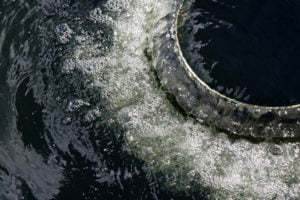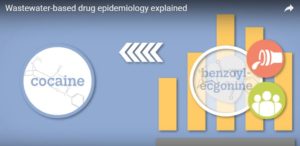This is the fourth in a blog series based on the findings of the 2015 annual European Drugs Report published by the European Monitoring Centre for Drugs and Drug Addiction. In it, I explore the development of wastewater analysis as an increasingly effective method of detecting patterns in drug use.
There’s something in the water
Wastewater analysis is a rapidly developing scientific discipline with the potential for monitoring real-time population-level trends in illicit drug use. Originally used in the 1990s to monitor the environmental impact of liquid household waste, the method has since been used to estimate illicit drug consumption in different cities.
It involves sampling a source of wastewater, such as a sewage influent to a wastewater treatment plant. This allows scientists to estimate the quantity of drugs consumed in a community by measuring the levels of illicit drugs and their metabolites excreted in urine.
Findings
In 2010, a Europe-wide network was established to standardise the approach to wastewater analysis and to coordinate national studies. Following the success of an initial study in 19 European cities in 2011, comparable studies were undertaken over the following three years covering up to 21 European countries. A standard protocol and a common quality control exercise were used in all locations, which made it possible to directly compare illicit drug loads in Europe over a one-week period during four consecutive years.
Analysis found that cocaine use is higher in western and some southern European cities and lower in northern and eastern European cities. Amphetamine use was found to be relatively evenly distributed across European cities, although with highest levels reported in the north and northwest of Europe. In contrast, methamphetamine use is concentrated in cities within the Czech Republic, Slovakia and northern Europe, while the observed methamphetamine loads in the other locations were very low to negligible.
Relatively low levels of MDMA were found in most European countries. The highest loads found were detected in Dutch cities.
The study also highlighted differences among cities within the same country, which may be explained in part by the different social and demographic characteristics of the cities (universities, existence of nightlife area and age distribution of population). In the majority of countries with multiple study locations, cocaine and MDMA loads were generally higher in large cities compared to towns. No such differences could be detected for cannabis, amphetamine and methamphetamine loads.
You can check out the EMCDDA’s interactive map to look at detailed findings. The screenshot below shows the levels of use of cocaine on a Friday in 2014:
The future
Alongside developments in wastewater analysis at the general population level, a new technique has been established that involves the collection and analysis of pooled urine from stand-alone portable urinals. This method can detect both traditional drugs and new psychoactive substances, including previously undetected drugs, even at low concentrations.
Wastewater analysis has demonstrated its potential as a complement to established monitoring tools in the drugs area. It has some clear advantages over other approaches as it is not subject to response and non-response bias and can better identify the true spectrum of drugs being consumed, as users are often unaware of the actual mix of substances they take.
This tool also has the potential to provide timely information in short timeframes on geographical and temporal trends, but, as is the case with established monitoring tools, this method can be hampered by reporting delays.
Nonetheless, as a method wastewater analysis has moved from being an experimental technique to being a new method in the epidemiological toolkit. Its rapid ability to detect new trends can help target public health programmes and policy initiatives at specific groups of people and the different drugs they are using.







